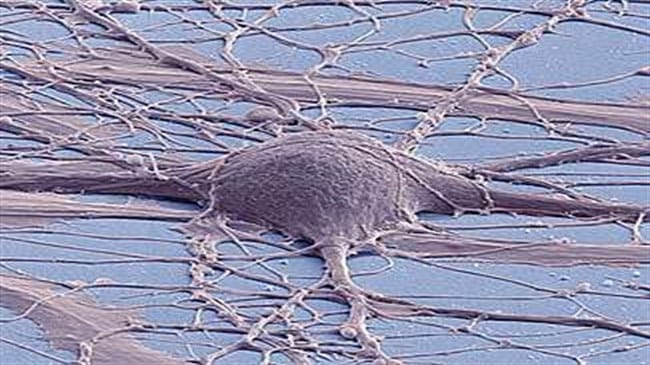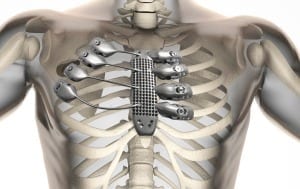
Scientists at the UNC Eshelman School of Pharmacy are creating white blood cells that teach brain cells to heal the damage caused by degenerative neurological disorders like Parkinson’s disease
As a potential treatment for Parkinson’s disease, scientists at the University of North Carolina at Chapel Hill have created smarter immune cells that produce and deliver a healing protein to the brain while also teaching neurons to begin making the protein for themselves.
The researchers, led by Elena Batrakova, an associate professor at the UNC Eshelman School of Pharmacy’s Center for Nanotechnology in Drug Delivery, genetically modified white blood cells called macrophages to produce glial cell–derived neurotrophic factor, or GDNF, and deliver it to the brain. Glial cells provide support and protection for nerve cells throughout the brain and body, and GDNF can heal and stimulate the growth of damaged neurons.
“Currently, there are no treatments that can halt or reverse the course of Parkinson’s disease. There are only therapies to address quality of life, such as dopamine replacement,” Batrakova said. “However, studies have shown that delivering neurotrophic factor to the brain not only promotes the survival of neurons but also reverses the progression of Parkinson’s disease.”
In addition to delivering GDNF, the engineered macrophages can “teach” neurons to make the protein for themselves by delivering both the tools and the instructions needed: DNA, messenger RNA and transcription factor.
Successfully delivering the treatment to the brain is the key to the success of GDNF therapy, said Batrakova. Using immune cells avoids the body’s natural defenses. The repurposed macrophages are also able to penetrate the blood-brain barrier, something most medicines cannot do. The reprogrammed cells travel to the brain and produce tiny bubbles called exosomes that contain GDNF. The cells release the exosomes, which then are able to deliver the proteins to neurons in the brain. The work is described in an article published online by PLOS One.
“By teaching immune system cells to make this protective protein, we harness the natural systems of the body to combat degenerative conditions like Parkinson’s disease,” Batrakova said.
Read more: UNC Smart Cells Teach Neurons Damaged by Parkinson’s to Heal Themselves
The Latest on: Parkinson’s disease
[google_news title=”” keyword=”Parkinson’s disease” num_posts=”10″ blurb_length=”0″ show_thumb=”left”]
via Google News
The Latest on: Parkinson’s disease
- She had Parkinson's and didn't want to live. Then she got this surgery.on April 30, 2024 at 4:04 am
Deep brain stimulation is a game-changer for patients like Peters amid the ongoing fight for medical breakthroughs for neurologic conditions.
- 'They're not alone': Longview Parkinson's support group offers education, connectionon April 30, 2024 at 3:35 am
Detecting the signs and symptoms of Parkinson’s disease early is the best way for someone who has it to maintain his or her quality of life. That’s why Gilmer residents ...
- Early signs of Parkinson's disease and how to improve quality of lifeon April 29, 2024 at 6:47 am
Parkinson’s Disease (PD) affects nearly one million people in the U.S., and more than 90,000 people in the U.S. are newly diagnosed each year – a 50% increase f ...
- Global Parkinson’s Disease Industryon April 29, 2024 at 6:12 am
Global Parkinson’s Disease Industry likely to raise at a CAGR of 5.1% and may surpass US$ 3.7 billion during forecast period 2023 to 2033 ...
- From understanding Parkinson’s Disease to the increased rate of cancer cases, here are this week’s talkbackson April 27, 2024 at 7:22 pm
WGAL News 8 talks to professionals to give a better understanding of important events impacting the Susquehanna Valley.
- Global Parkinson’s Disease Market for Spectacular Growth, Projected to Reach US$ 6.1 Billion by 2033 with a 5.1% CAGRon April 26, 2024 at 8:42 am
The global Parkinson’s Disease market is projected to be valued US$ 3.7 billion. The global market is anticipated to expand at a consistent 5.1% CAGR between 2023 and 2033, culminating in a valuation ...
- Scientists discover potential biomarkers of environmental exposures in Parkinson's diseaseon April 26, 2024 at 7:00 am
A team of Northwestern Medicine investigators has discovered novel DNA methylation patterns in the blood of patients with Parkinson's disease, according to findings published in Annals of Neurology.
- Recognizing symptoms of Parkinson's diseaseon April 26, 2024 at 6:37 am
April is Parkinson's Disease Awareness Month, which make this a good time to learn about the symptoms of Parkinson's disease.
- ‘You wish you hadn’t been born’: How Parkinson’s disease went forgottenon April 20, 2024 at 9:00 am
For years, Newsnight and University Challenge presenter Jeremy Paxman has been famous for ruthlessly cutting to the chase. But last week, as he and a group of high-profile people with Parkinson’s ...
- AI Identifies New Potential Treatments For Parkinson’s Diseaseon April 18, 2024 at 7:02 am
AI and machine learning techniques can be used to speed up the discovery of new drug candidates for serious diseases like Parkinson's and cancer.
via Bing News










